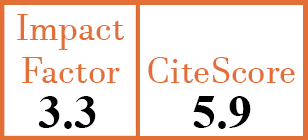Full Papers
The Italian Observational Study on Severe Osteoporosis (ISSO): 24-month results on incidence of fractures and adherence to treatment
L. Idolazzi1, D. Maugeri2, S. Monti3, M. Massarotti4, G. Osella5, M. Barbagallo6, R. Del Fiacco7, S. Silvestri8
- Lilly Rheumatology Unit, Department of Medicine, University of Verona, Italy. luca.idolazzi@univr.it
- Geriatric Unit, University of Catania, Cannizzaro Hospital, Catania, Italy.
- Department of Endocrinology, Sant'Andrea Hospital, Sapienza University of Rome, Italy.
- Division of Rheumatology and Clinical Immunology, Humanitas Research Hospital, Rozzano, Italy.
- Medicina Interna, Azienda Ospedaliero-Universitaria San Luigi Gonzaga, Orbassano, Italy.
- Geriatric Unit, Department of Internal Medicine and Geriatrics (DIBIMIS), University of Palermo, Italy.
- Medical Department Lilly Italia, Sesto Fiorentino, Italy.
- Medical Department Lilly Italia, Sesto Fiorentino, Italy.
on behalf of the ISSO Study Group
CER8236
2016 Vol.34, N°2
PI 0247, PF 0253
Full Papers
Free to view
(click on article PDF icon to read the article)
PMID: 26940788 [PubMed]
Received: 23/12/2014
Accepted : 16/10/2015
In Press: 26/02/2016
Published: 13/04/2016
Abstract
OBJECTIVES:
To estimate the proportion of patients with very severe osteoporosis (those covered by the reimbursement criteria of the Italian National Health Service) experiencing new vertebral and non-vertebral fragility fractures in the first 24 months of a new anti-osteoporosis treatment.
METHODS:
Prospective observational study in men and post-menopausal women (aged > 21 years) initiating anti-osteoporosis treatment for very severe osteoporosis. Eligibility was based on teriparatide (TPD) reimbursement criteria in Italy: incident of vertebral or hip fracture during anti-resorptive treatment (minimum 1 year), or at least three prevalent severe vertebral fractures, or two prevalent severe vertebral fractures and a historical proximal hip fracture. Incidence of new clinical vertebral and non-vertebral fractures was documented by original x-rays and/or radiological reports, and a post-hoc analysis compared data from the TPD monotherapy population versus the total treated group.
RESULTS:
Overall, 767 patients (mean age 72.8 years, 90.7% women) were enrolled in the study, of whom 628, 538, 419 and 424 attended visits at 6, 12, 18 and 24 months, respectively. The most commonly prescribed therapy was TPD (single-agent; 64.5%), then bisphosphonates and other anti-resorptives (33.3%). A combination of different oral treatments was given to 22.5% of the patients. Overall treatment adherence at 24 months was 65.7%. In a post-hoc analysis, the overall incidence of new clinical vertebral and non-vertebral fractures in the total treated population was, respectively, 4.7% and 2.3% in the first 6 months; 1.8% and 1.6% in the 6–12 month period; 2.9% and 1.4% in the 12–18 month period; and 2.2% and 1.0% in the 18-24 month period.
CONCLUSIONS:
In patients with very severe osteoporosis, the risk of new vertebral and non-vertebral fractures declined after the first 6 months and remained low throughout the study.


